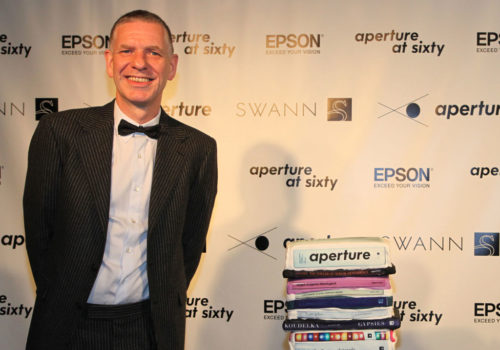In the history of photography, Aperture is a legend. This publishing house, magazine and gallery space is celebrating its 60th anniversary today, and we have decided to honor its history. Laurence Cornet organized this tribute.
1952. The absence of a serious periodical dedicated to photography had gone on long enough. Minor White and a group of critics fill in the gap by publishing the first issue of Aperture.
Eleven volumes later, having published the work of photographers as compelling as Dorothea Lange, Edward Weston, David Rowinski, Frederick Sommer and Imogen Cunningham, the foundation collapses under the weight of its debts, despite the support of several patrons, and appoints Michael Hoffman as its executive director and editor.
Upon his arrival in 1965, Hoffman puts Aperture back on its feet, initiating or inspiring a series of new activities: Peter Schlessinger’s Apeiron workshops at the beginning of the 1970s, the continuation of the revue despite the death of its founder in 1976, the publication of monographs and the creation of exhibitions, most often held at the Philadelphia Museum of Art, where in 1964 Hoffman had founded the Alfred Stieglitz center. Hoffman’s sudden death in 2001 plunges Aperture into a period of doubt that sees repeated administrative changes and a financial crisis, but during which it continues to publish important books under the direction of the editors Melissa Harris and Lesley Martin.
Aperture maintains its influence but takes a real hammering during the radical reconfiguration of the photography publishing market: the 40 major publishers now find themselves competing not only with many others, but with user-generated platforms like Blurb, while large online distributors like Amazon put photography bookstores out of business at an alarming rate.
The original vision of the foundation survives despite these changes, and the appointment of Chris Boot to the head of Aperture in January 2011 is a promising sign for its future. Boot looks at the challenges he faces in this new environment and sees fantastic opportunities, as he relies on the zealous group of photographers who are essential not only to the history of Aperture, but to photography itself.
With more than 30 million images produced every year, editing is more than ever the linchpin of photography, and Aperture is implementing activities to share its expertise and network. The gallery is no longer merely an exhibition space. With its regular workshops and discussions, it has become a forum for consultation, purchasing, discovery and promotion.
This is the meeting place for a loyal community, a family bringing together documentary and conceptual photographers, students, critics, curators and a throng of insatiable amateurs. Photography is becoming the trigger for social and cultural exchanges. This social aspect extends online to Aperture’s blog, an interactive compilation of programming highlights comprised of photos, audio and videos.
In addition to its steady publication of essential works, Aperture is increasing the ways for people to participate, positioning itself as the indispensable mediator in the future of photography.
Laurence Cornet
















